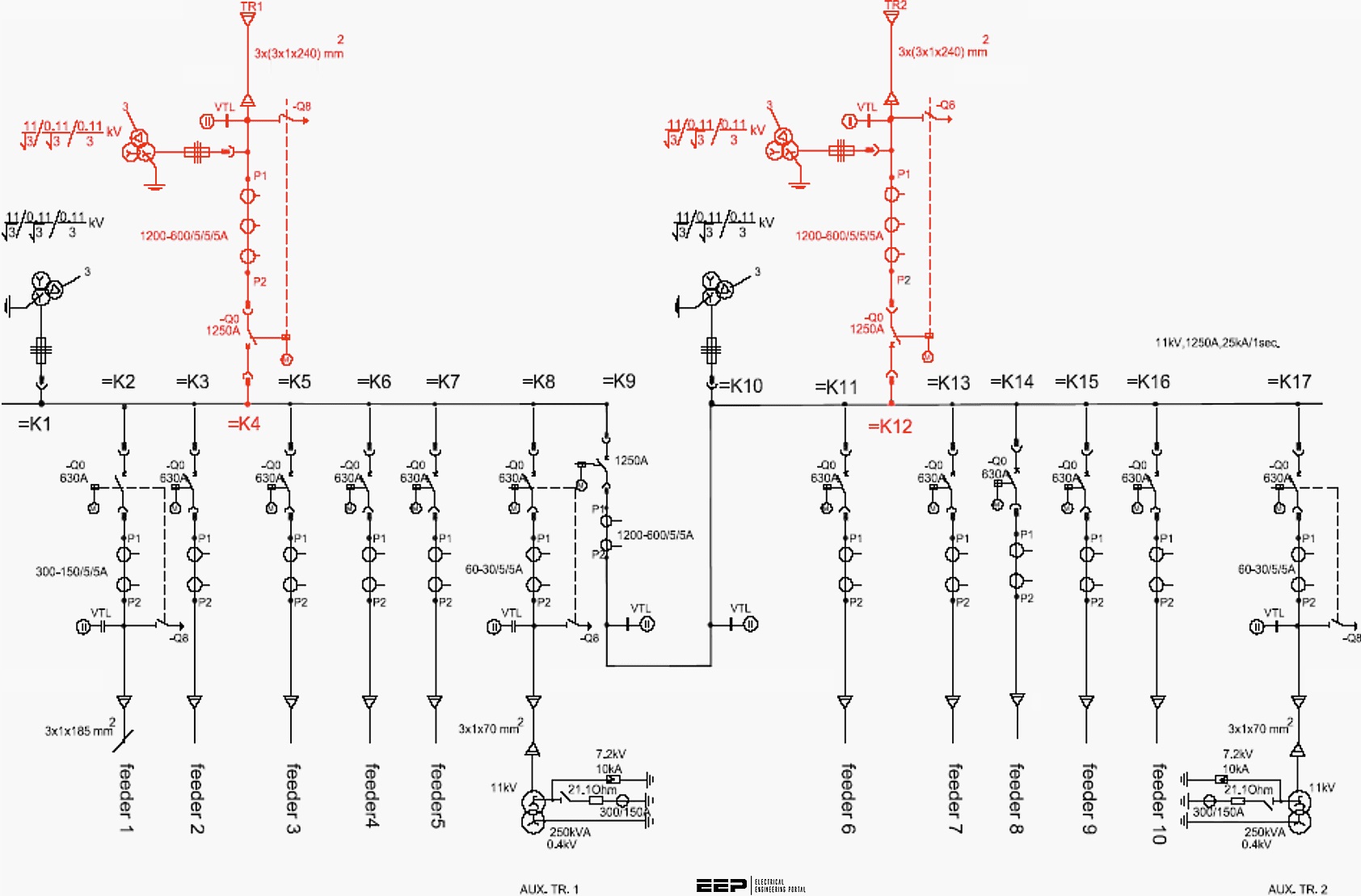Today at 16:00 UTC we review best practice for engineering and installing the point of common coupling between an electrical service provider its and an purchasing — under the purview of NEC CMP-10.
Committee topical purviews change cycle-to-cycle. Here’s the transcript for today’s session: CMP-10 Second Draft Report (368 pages)
Use the login credentials at the upper right of our home page.

The relevant passages of the National Electrical Code are found in Article 230 and Article 495. We calibrate our attention with the documents linked below. These are only representative guidelines:
University of Michigan Medium Voltage Electrical Distribution
Texas A&M University Medium Voltage Power Systems
University of Florida Medium Voltage Electrical Distribution
Representative standards for regulated utilities for purchased power:
Detroit Edison Primary Service Standards (Green Book)
American Electric Power: Requirements for Electrical Services
Pacific Gas & Electric Primary Service Requirements
The IEEE Education & Healthcare Facilities Committee curates a library of documents similar to those linked above.
Design of Electrical Services for Buildings
We are in the process of preparing new (original, and sometimes recycled) proposals for the 2026 National Electrical Code, with the work of Code Panel 10 of particular relevance to today’s topic:
First Draft Meetings: January 15-26, 2024 in Charleston, South Carolina
Electrical meter billing standards are generally regulated at the state or local level, with guidelines provided by public utility commissions or similar regulatory bodies. These tariff sheets are among the oldest in the world. There are some common standards for billing and metering practices, including:
- Meter Types: There are various types of meters used to measure electricity consumption, including analog (mechanical) meters, digital meters, and smart meters. Smart meters are becoming more common and allow for more accurate and real-time billing.
- Billing Methodology:
- Residential Rates: Most residential customers are billed based on kilowatt-hours (kWh) of electricity used, which is the standard unit of energy.
- Demand Charges: Some commercial and industrial customers are also subject to demand charges, which are based on the peak demand (the highest amount of power drawn at any one point during the billing period).
- Time-of-Use Rates: Some utilities offer time-of-use (TOU) pricing, where electricity costs vary depending on the time of day or season. For example, electricity may be cheaper during off-peak hours and more expensive during peak hours.
- Meter Reading and Billing Cycle:
- Monthly Billing: Typically, customers receive a bill once a month, based on the reading of the electricity meter.
- Estimation: If a meter reading is not available, some utilities may estimate usage based on historical patterns or average usage.
- Smart Meter Readings: With smart meters, some utilities can provide daily or even hourly usage data, leading to more precise billing.
- Meter Standards: The standards for electrical meters, including their accuracy and certification, are set by national organizations like the National Institute of Standards and Technology (NIST) and the American National Standards Institute (ANSI). Meters must meet these standards to ensure they are accurate and reliable.
- Utility Commission Regulations: Each state has a utility commission (such as the California Public Utilities Commission, the Texas Public Utility Commission, etc.) that regulates the rates and billing practices of electricity providers. These commissions ensure that rates are fair and that utilities follow proper procedures for meter readings, billing cycles, and customer service
- Large University “Utilities”. Large colleges and universities that generate and distribute some or all of their electric power consumption have developed practices to distribute the cost of electricity supply to buildings. We will cover comparative utility billing practices in a dedicated colloquium sometime in 2025.
Michigan Public Service Commission | Consumer’s Energy Customer Billing Rules








